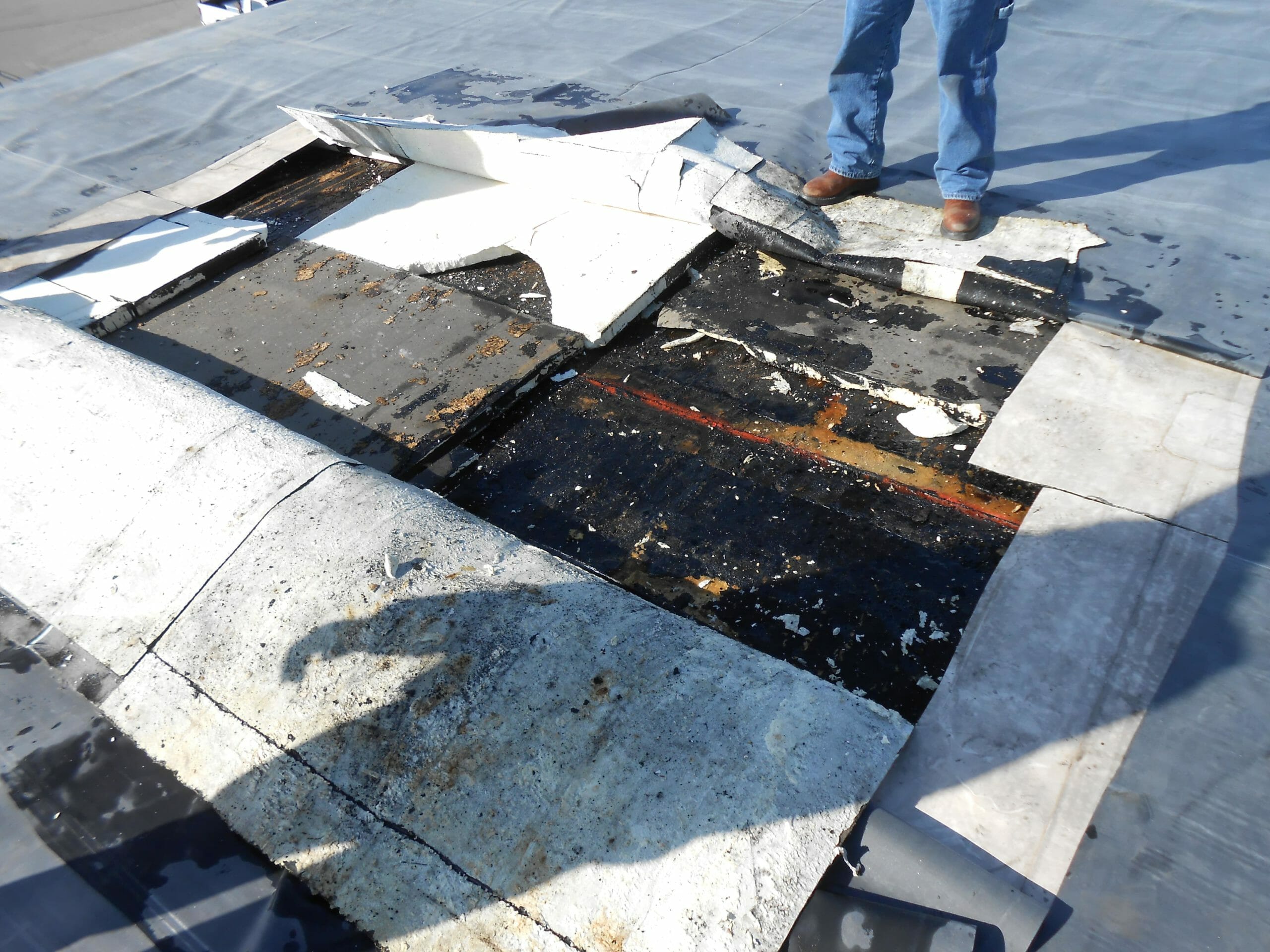Wind and hail can cause serious problems when it comes to your roof. But not all signs of wind or hail damage on your commercial roof are obvious. Different roofing materials show damage in different ways. Even if there are no obvious leaks after a storm, it’s still important to always check your roof after every severe weather event.
Here are some of the things to look out for to see if your roof was damaged by a storm:
1. Dents, divots, or cracks
Soft metal, asphalt, or wood (rare on commercial roofs) may show dents after being struck by hail. These may be isolated spots or they may spread across the entire roof. Damage like this weakens the roof membrane, which can shorten the roof’s lifespan or lead to more immediate problems such as water damage and leaks.
2. Random spots or markings
Even when roofing materials resist denting from hail, the ice pellets may still scuff up the roofing surface. PVC, metal, and other types of single-ply roofs will often show circular marks or black spots after a hail storm. In some cases, these marks may be superficial, but at other times, they could be a sign of damage to the materials themselves.
3. Lifted or peeled-back roofing materials
High wind speeds can pull back roof coverings, displace shingles, or bend metal roof accessories. Wind damage like this makes the component more vulnerable to worse damage in the future. It’s important to repair this type of damage immediately after it occurs.
4. Damage to roofing details
Components like skylights are particularly vulnerable to wind and hail. The damage may be obvious, like a crack in the glass, but wind and hail can also damage the seals or trim of the glass. Building managers should carefully examine all rooftop skylights after a storm and check that they remain watertight. Hail and high winds can also damage roof coping and gutters, affecting their functionality and their aesthetics. These roofing components also must be inspected after a hailstorm.
5. Displaced rooftop equipment
Strong wind can sometimes move rooftop equipment, pulling up solar panels or jostling HVAC systems. The movement may be very small so inspectors should check fasteners to make sure that any rooftop equipment remains safely secured.
6. Leaks
Leaks from storm damage can require extensive repairs or even a roof replacement. Despite the severity of this problem, not all leaks are obvious. Even if water is not dripping into your building, you may find areas where water has slowly gotten into the insulation. Building managers should check for roof leaks or have a roof inspection performed after a storm.
If you’re worried about damage to your commercial roof, contact Maxwell Roofing & Sheet Metal today. Our team of experts can help you determine the extent of the damage and work quickly to remediate any problems.

